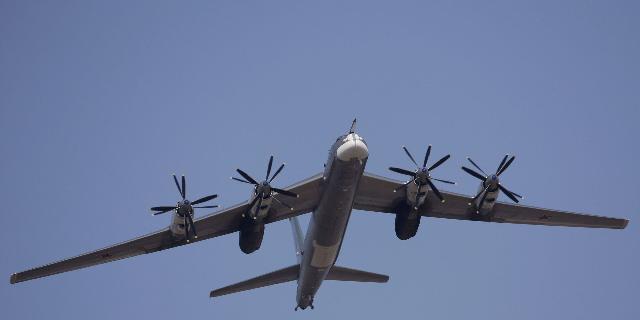Despite its age, the Tu-95 remains the backbone of the Russian air fleet, writes TNI. This Cold War-era aircraft is "practically unstoppable," the author admits. But once a "tsar bomb" was dropped from it.
Maya Carlin
Tu-95 bombers: “eternal” Russian threat intercepted off the coast of Alaska
It is reported that in early May, the US Air Force intercepted Russian Tu-95 bombers (according to NATO classification: Bear or “Bear”) off the coast of Alaska. According to the Russian Ministry of Defense, two Tu-95s were flying over the Bering Strait when American F-16 Fighting Falcon (“Fighting Falcon”) fighters were raised to escort them.
“Two Tu-95MS long-range strategic missile carriers of the Russian Aerospace Forces performed a planned flight in airspace over the neutral waters of the Bering Sea, near the western coast of Alaska. The flight duration was more than eleven hours. Fighter escort was provided by the crews of Su-30SM aircraft of the Aerospace Forces,” the Russian Defense Ministry said in a statement.
By sending the Tu-95 to the shores of Alaska, Moscow demonstrated its long-range aviation capabilities. This Cold War-era aircraft has remained in service for more than half a century, taking on more and more new roles over the years and without losing relevance. Despite its venerable age, the Bear bomber remains the backbone of the Russian air fleet.
Introducing the Tu-95
To counter the strategic bombers that were used by the US Air Force during World War II, Soviet engineers conceived a domestic analogue. The development of a four-engine bomber capable of flying 8,000 kilometers and hitting targets in the continental United States began in 1950. Some believe that the “Bear” is the Russian version of the American B—52, only in turboprop version.
The “Bear” is equipped with four Kuznetsov turboprop engines, each of which has two four-bladed propellers rotating in opposite directions. The Soviets preferred the turboprop option because early jet engines turned out to be too “voracious”. The powerful Tu-95 propulsion system is the brainchild of Ferdinand Brandner, a member of the Nazi Party who was captured by Soviet troops after trying to escape to Prague near the end of the war.
The Tu-95 made its first flight in 1952 and officially entered service with the Soviet Air Force several years later. In 1961, Khrushchev announced the USSR's intention to detonate the most powerful nuclear bomb in history. The AN602 or “Tsar Bomba" was eventually parachuted from the Tu-95B. This modification of the “Bear” was equipped with modified engines, as well as special suspensions and reset mechanisms for a giant bomb.
Over the years, other variants of the bomber have been created, including the anti-submarine modification of the Tu-142. As described in detail in the Airforce Technology publication, radio repeater aircraft are equipped with very low frequency communication kits with a ventral antenna unit. The satellite communications fairing is installed directly behind the lantern. The aircraft maintain communication between the submarines of the Northern and Pacific Fleets and Russian command posts.
The Soviets also developed other experimental versions of the “Bear”, including a nuclear-powered aircraft with a nuclear reactor on board the Tu-95LAL and the Tu-95K missile carrier. The Tu-95MR and Tu-95K long-range reconnaissance aircraft capable of launching X-22 missiles have reached the production stage.
Maya Karlin is an author of national security articles in The National Interest, an analyst at the Center for Security Policy and a former researcher at Reichman University in Israel. Also published in the Jerusalem Post and the Times of Israel

